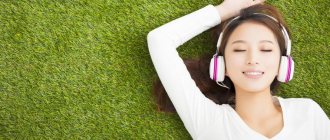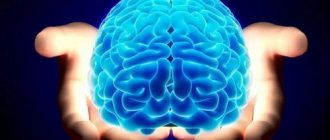: Reading time:
A psychotherapist with more than 14 years of experience, Krailina Irina Sergeevna, talks about effective methods of self-help for panic attacks, how they work, and the role of psychotherapy.
A person who has experienced a panic attack for the first time thinks that something extraordinary, terrible, catastrophic has happened to him.
Many of my patients, when they learn ways to control their emotions, thoughts and body, exclaim: “Oh, if only when this happened for the first time, someone told me that this is a disorder well known to doctors and psychologists, that it can be treated, and most importantly “They don’t die from it!”
After all, then, at the very beginning, there was one most terrible thought that covered everything in the world like a black cloud: “No one knows what’s wrong with me. I will die".
Therefore, a person tries to get first aid by calling an ambulance, or going to a therapist or cardiologist.
Many people try to fight this disorder on their own, looking for recommendations and advice on how to get rid of panic attacks. Usually on the Internet. There is a lot of information there, often it is scattered and contradictory.
Therefore, I will try to systematize information on recommendations and methods of self-help and talk about the benefits of psychotherapy.
For those who want to better understand the topic, the article contains “More details” blocks: you need to click/tap on them for additional information to appear. If your goal is to learn only about self-help techniques, just read the plain print.
Learn more about the mechanism of development and symptoms of panic attacks
Click on the title to read the text
A panic attack is an unpredictable attack of acute anxiety (panic) with bodily symptoms for which the autonomic nervous system (hereinafter referred to as the ANS) is responsible.
Scheme 1. How the autonomic nervous system (ANS) works
In an individual, these symptoms may be present in full or in part:
- heartbeat;
- rise in blood pressure;
- frequent shallow breathing;
- feeling of suffocation, tightness in the chest;
- goosebumps;
- cold extremities;
- dizziness;
- pallor;
- sweating;
- urge to defecate;
- nausea;
- trembling in hands.
These symptoms are a manifestation of autonomic crises (sympathetic-adrenal, vagoinsular or mixed). Often the attack is accompanied by fear of death, loss of control or madness, as well as a feeling of unreality of what is happening or change in one’s self.
Lasts for minutes and ends with the passage of a large amount of light-colored urine. The person feels broken and empty.
Vegetative crises can be a manifestation of certain somatic diseases (endocrine, cardiovascular system), can occur during pregnancy, taking certain medications, or occur as isolated episodes against the background of overwork or alcohol abuse.
When doctors have ruled out somatic pathology, but panic attacks recur, it is more correct to call it a panic disorder.
The reason for the recurrence of panic attacks is a special form of thinking (when anxious traits are combined with perfectionism, the need to control everything) plus instability of the autonomic nervous system (what doctors used to call vegetative-vascular dystonia).
After the first panic attack, a person is in constant anxious anticipation of its repetition. The slightest unpleasant sensation in the body or just a thought can trigger a cascade of somato-vegetative reactions that support and reinforce each other through the mechanism of a vicious circle and lead to panic.
To clearly explain how different self-help methods work, let’s consider a person as an integral system and highlight 4 components:
- the human body;
- his emotions;
- thoughts;
- the external environment with which it interacts.
These components interact with each other and influence each other.
An example of the interaction of body, emotions, thoughts and environment
Click on the title to read the text
For example, support from the environment, family, gives confidence (the thought) that help will be provided in any case. The level of anxiety (emotions) temporarily decreases and vegetative symptoms go away (body). The trouble is that environmental support does not completely eliminate panic disorder. She only supports the belief that one cannot cope with the disorder on one’s own.
Self-help for panic attacks: body
The most common recommendations and advice on self-help regarding the body are:
- intense exercise in the morning and (or) physical activity at the first signs of anxiety;
- long walks in the fresh air;
- deep calm breathing, or “diaphragmatic breathing”, or “belly breathing”, other types of breathing exercises;
- avoidance of alcohol and stimulants;
- cold and hot shower;
- sufficient sleep;
- plenty of warm drinks;
- medicines, herbal medicine, homeopathy;
- acupuncture.
Separately, it should be said about methods of targeted activation of the parasympathetic division of the ANS and reducing heart rate by inducing specific reflexes:
- according to Aschner - close your eyes and use the pads of your thumbs to press intensely on the eyeballs for 15–20 seconds;
- “diving dog” reflex - hold your breath and immerse your face in a basin of ice water;
- Valsalva reflex - strain at the height of a deep breath;
- induce a gag reflex (the urge to vomit, but not vomiting itself) - press on the root of the tongue.
Attention! These actions are contraindicated in the following conditions:
- severe chest pain;
- shortness of breath and cough with foamy sputum;
- severe weakness, decreased blood pressure;
- convulsions, disturbances of sensitivity and movement in the limbs.
- loss of consciousness.
These methods work “through the body” - they affect the autonomic nervous system through one of three mechanisms:
- Promote relaxation in its sympathetic department.
- Activate the parasympathetic department.
- Harmonize and stabilize their activities.
How some self-help methods affect the ANS
Click on the title to read the text
- For example, intense physical activity releases tension in the sympathetic part of the autonomic nervous system - it allows you to “blow off steam.”
- Deep breathing and inducing vagal reflexes stimulate the parasympathetic system, which is an antagonist to the sympathetic system, thus balancing it.
- Avoiding stimulants allows you to avoid excessive stress on the sympathetic department.
- A contrast shower balances both departments.
- Sufficient walks and sleep help restore the body's own strength and resources.
Auto-training for depression, anxiety and neuroses
If you are faced with a depressive disorder or neurosis, medication alone will not be enough! Even if you have been prescribed a good antidepressant, it remains, albeit very strong, but still one of the tools in the fight against the disease. To truly cope with the problem, it is worth using other means - moderate physical activity, meditation, diet, proper sleep patterns. Another effective “weapon” can be auto-training. Autogenic training is used not only in inpatient treatment in clinics, it can also be successfully used independently.
What it is?
The method of autogenic training (or autotraining) is based on a combination of muscle relaxation, self-hypnosis and autodidactics (self-education). On Wikipedia we read:
Autogenic training (from ancient Greek α?τ?ς - “oneself”, γ?νος - “origin”) is a psychotherapeutic technique aimed at restoring the dynamic balance of the homeostatic mechanisms of the human body, disturbed as a result of stress.
Autotraining is based on self-hypnosis of certain positive attitudes (“Anxiety goes away!”, “Tension leaves the body!”, etc.), which contribute to the course of treatment for depression, GAD (generalized anxiety disorder) and various types of neuroses.
I want to say right away that you should not underestimate this technique and perceive it as something frivolous. Having understood its mechanism, you will understand that this is a very powerful tool (it’s not for nothing that it is included in the treatment program in clinics). By repeating certain settings (or listening to the coach’s voice), you give a signal not only to your brain, which gradually tunes into a positive wave, but also to your unconscious, which absorbs information well in this way.
In my practice, I sometimes come across clients who perceive such techniques as something ridiculous or illogical (“After all, these are just words, just phrases, how can they have a healing effect?”). Typically, I explain it this way. When we need to learn, for example, the grammatical rules of a foreign language, we turn to our consciousness. We repeat the rules, read them out loud, discuss incomprehensible moments with the teacher, etc. This process is familiar and logical. But the unconscious perceives information differently, therefore the form in which it receives the necessary information will also be different. And there is nothing strange here. Even if you don’t currently believe in the phrases you say, keep doing it anyway! You are pronouncing them now not for your consciousness, but for the unconscious, which could have internalized an irrational attitude and presented it to consciousness as an immutable truth. By the way, this exercise will be especially useful for people with obsessive-compulsive disorder, as well as those suffering from panic attacks.
An example of auto-training that you can do yourself
“I'm completely relaxed! Every muscle in my body relaxes. Now I breathe calmly and measuredly. Inhale... exhale, inhale... exhale..."
(Start relaxing every part of your body, starting from your toes to the top of your head.)
We repeat the following phrases to ourselves:
“My feet are relaxed... They become heavy... I feel a pleasant heaviness... Anxiety leaves my body... I feel calm and harmony.”
Repeat the same text for each part of the body.
When you reach the top of your head, return to your feet again, changing the wording slightly (focusing on filling the body with warmth...)
“My feet are filled with warmth... They are warm... The body is relieved of tension... Anxiety goes away...”
Then you can add the necessary settings yourself, for example:
“Fear goes away, I am filled with energy and strength”
“Panic no longer haunts me. I am free from anxiety and relaxed."
Etc.
When finished, slowly open your eyes and say the following phrases:
“I feel calm and comfortable... I was well rested. I am filled with the energy of health and free from anxiety.”
How to conduct auto-training correctly?
- This type of training is best done while lying down with your eyes closed before going to bed or immediately after waking up in the morning.
- Turn off all gadgets and tune in to relaxation. Nothing should bother you!
- Repeat all phrases out loud or silently clearly, calmly and slowly. You can also find many ready-made auto-trainings on the Internet, where the instructions are given by the trainer.
- It is best to perform the exercise while listening to slow yoga music or recording nature sounds (the steady sound of rain, birdsong, etc.)
- Auto-training will be much more effective if you imagine yourself in a pleasant, comfortable place (on the seashore, in the mountains, in the forest, etc.)
- After finishing the exercise, do not stand up abruptly. Open your eyes and lie down for a while.
- To relax, you can apply a few drops of aromatic oil (for example, lavender) to your wrist or chest (if you are not allergic).
For auto-training to have an effect, you need to do it regularly (ideally 2 times a day - morning and evening)!
Self-help for panic attacks: thoughts and emotions
Recommendations regarding thoughts and emotions:
- switch thoughts using distracting actions;
- reconsider your attitude towards health and death;
- determine with what thought it all began and prove to yourself the absurdity of this thought;
- Convince yourself that you can live with panic disorder;
- meditate;
- keep a diary;
- read a prayer.
You may notice that some self-help methods involve the body, emotions, and thoughts. For example, meditation. Performing complex breathing techniques not only stimulates the parasympathetic part of the ANS, but also changes the gas composition of the blood and switches attention.
Changes in one area lead to changes in another. For example, thoughts-memories of a pleasant event evoke pleasant emotions.
Benefits of PA psychotherapy
When turning to a psychotherapist in specialized clinics for the treatment of panic attacks, a person has the opportunity to significantly reduce the time of treatment for the disorder. The work follows specialized protocols that take into account all factors in the occurrence and maintenance of the disorder.
Who is psychotherapy suitable for?
Psychotherapy for panic disorder has no special contraindications . The restrictions relate to general contraindications in psychotherapy, for example, cognitive deficits in humans.
Therapy for panic disorder can be carried out without loss of effectiveness online via Skype. This is convenient for remote areas of Russia, where there are no specialists who successfully use methods of treating panic attacks and panic disorder.
How panic attacks are treated by a psychotherapist
The treatment protocol for panic disorder consists of:
- identifying panic triggers;
- psychoeducation of the patient - an explanation of the ongoing processes from a scientific point of view;
- identifying misconceptions about panic;
- withdrawal of protective behavior;
- exposition.
Exposure is the presentation of frightening situations, the experience of which gives the person a new experience that a panic attack is experienced. It helps reduce panic attacks during neurosis. This is a necessary element of therapy, which, through the experience of fear, under the supervision of a specialist, leads to a good result and recovery.
The essence of auto-training
The founder of auto-training was Dr. I.G. Shultz. Later, after Schultz, many methods of conducting this therapy were described, including with the help of yoga and the teachings of Tibetan monks.
In 1932, Dr. Schultz, conducting hypnosis sessions with patients, noticed that some of them became much calmer and more relaxed during the procedure. Modern scientists have proven that self-hypnosis therapy for neuroses and overexcitation is a completely effective means for both treatment and prevention of such conditions.
The goal of auto-training for the patient is to reduce the memory of the disease, overcome their fears and achieve peace of mind.
Self-hypnosis has opened up a lot of opportunities for Eastern masters. With its help, they can control the work of their own body - slow down the pulse, stop and start the heart. The absolute record was set by one of the masters, who, having plugged his nostrils and ears, withdrew into himself for 30 days, while completely stopping all the vital processes of the body.
Modern man does not need such superpowers, but putting his thoughts in order, normalizing sleep and restoring the ability to enjoy life is quite possible with simple autodidactic exercises.
Preparation for auto-training
Choosing the timing of training is an important aspect of auto-training. If you know your body well enough, then choose a time when it is most relaxed: immediately after sleep or in the evening after work. Comfortable selection of a time interval is the first step to success in treatment.
If it is difficult for you to immediately understand when it is more convenient to practice, then you can experiment. Try different options and choose the one that suits you best.
Organize your daily routine so that your training time does not change. The regularity of auto-training will allow the body to develop a habit over time, then each time it will independently relax by a certain time, so that the effect of therapy is maximum.
The patient's positive attitude and faith in the technique are also keys to healing. At this stage, the patient’s main task is to set a goal and go towards it. You should not miss a single workout - only systematically conducted sessions can help you achieve maximum results in the shortest possible time. It would be useful to study specialized literature.
The patient’s rethinking of his life and his priorities will be of great help in treatment. First of all, you should understand yourself, understand why you live. Surely something will have to change. But these changes will only benefit you.









